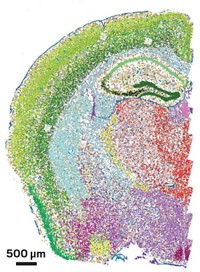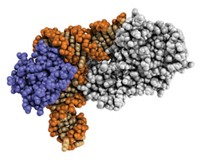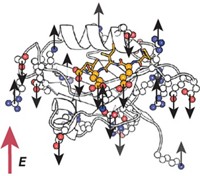Advertisement
Grab your lab coat. Let's get started
Welcome!
Welcome!
Create an account below to get 6 C&EN articles per month, receive newsletters and more - all free.
It seems this is your first time logging in online. Please enter the following information to continue.
As an ACS member you automatically get access to this site. All we need is few more details to create your reading experience.
Not you? Sign in with a different account.
Not you? Sign in with a different account.
ERROR 1
ERROR 1
ERROR 2
ERROR 2
ERROR 2
ERROR 2
ERROR 2
Password and Confirm password must match.
If you have an ACS member number, please enter it here so we can link this account to your membership. (optional)
ERROR 2
ACS values your privacy. By submitting your information, you are gaining access to C&EN and subscribing to our weekly newsletter. We use the information you provide to make your reading experience better, and we will never sell your data to third party members.
Analytical Chemistry
Watching protein expression one molecule at a time
Single-molecule imaging methods confirmed that gene expression is a random, bursty process
by Celia Henry Arnaud
December 18, 2016
| A version of this story appeared in
Volume 94, Issue 49

In 2006, X. Sunney Xie of Harvard University accomplished a rare feat. His group published one paper in Nature and another in Science in the same week. Those papers described the first observations of protein production in live cells with single-molecule sensitivity (Nature 2006, DOI: 10.1038/nature04599; Science 2006, DOI: 10.1126/science.1119623).
Xie and his coworkers used fluorescence microscopy to watch random protein production under conditions in which gene expression is repressed. Those measurements supported the idea that such production happens in sporadic bursts, rather than in a steady stream.
Prior to that work, “bursty gene expression at the protein level was inferred from static snapshots of single cells, and models had to be used to deduce the parameters of gene expression bursts,” says Taekjip Ha, a biophysicist at Johns Hopkins University. The year before, Ido Golding, a biophysicist then at Princeton, “had reported bursty gene expression at the RNA level, so it was nice seeing this at the protein level,” Ha says.
In subsequent work reported in 2010, Xie’s group used similar single-molecule methods to quantify the expression of more than 1,000 proteins in Escherichia coli (Science 2010, DOI: 10.1126/science.1188308). Even in this system-wide study, protein production was stochastic and bursty. That work also showed that, in bacteria, the levels of a protein and its corresponding RNA transcript are uncorrelated.
More recently, Xie and his coworkers have shown that this bursty behavior happens even for highly induced gene expression. With single-molecule and single-cell experiments, they found that the bursty gene expression stems from the supercoiling and uncoiling of the DNA molecule (Cell 2014, DOI: 10.1016/j.cell.2014.05.038).
Those studies raised the question of how cells change their gene expression levels. “In principle, one can change the burst frequency or burst duration and achieve the same outcome,” Ha notes. “Studies by several laboratories suggest that the primary means is by changing burst frequency.”
Fundamental studies on gene expression continue today. “Microscopic understanding of how genes can turn on and off in a stochastic manner is an exciting area of research and is likely to yield different answers in different systems,” Ha says.
“There are a lot of single-molecule actions in cells,” Xie says. “The capability to monitor single molecules in individual cells for a long time with this kind of sensitivity allows us to probe those stochastic, low-probability events that have important biological consequences.”
In the decade since Xie’s pair of papers, “our ability to measure things in individual cells has dramatically improved,” says Golding, who is now at Baylor College of Medicine. But the technology for proteins has lagged behind that for nucleic acids, he adds. “We cannot do single-cell whole proteomes yet,” Golding says. “Something that allows us to do high-throughput detection and labeling of whatever proteins we want would really move us forward.”
C&EN's YEAR IN REVIEW
Top Headlines of 2016
- Hawaii explosion cost a researcher an arm
- TSCA reform crossed the finish line
- U.S. elected Trump as president
- The periodic table got four new elements
- Post Dow-DuPont, chemical deal-making waned as 2016 advanced
- Labs made advances in Zika research
- Four ag giants to rule them all
- 2016 Nobel Prize in Chemistry at a glance
- Brexit bomb exploded
- Focus returned to Iran's chemical industry
- Overtime pay limit doubles under Obama administration
- The CRISPR craze continued
- Perfluorinated compounds got increased scrutiny
- From the lab to the market
- Paris Agreement to curb climate change took off
- World chemical production at a glance
- Flint's water woes lingered
- As China's economy slowed, chemical makers adjusted
- Mostafa A. El-Sayed won the 2016 Priestley Medal
- ACS members on average fared better than young graduates in employment surveys
- ACS invests internationally
- Spun-off firms found their footing in 2016
- Remembering the Nobel laureates we lost in 2016
- ACS proposed chemistry preprint server
- Berkeley College of Chemistry avoided reorganization
- Fight against opioid epidemic continued in 2016
- Noble gas shortages averted, for now
- The shale gas boom by the numbers
- Crop protection products in the crosshairs
- ACS launched new journals
- Website search terms of the year
- Biobased materials hit the big time
- No better deal emerged for Mossville, La.
- U.S. prepares for national food labeling standard
Top Research of 2016
- Mini factory made drugs on demand
- World's first PET-munching microbe discovered
- Liquid metals went to work
- Methylene activation reached new heights
- Biological structures of the year
- Wearable sensors were 'the' fashion accessories of 2016
- Scientists beefed up the antibiotic arsenal
- An enzymatic route to carbon-silicon bonds
- Single-atom catalysts gained a toehold
Revisiting Research of 2006





Join the conversation
Contact the reporter
Submit a Letter to the Editor for publication
Engage with us on Twitter